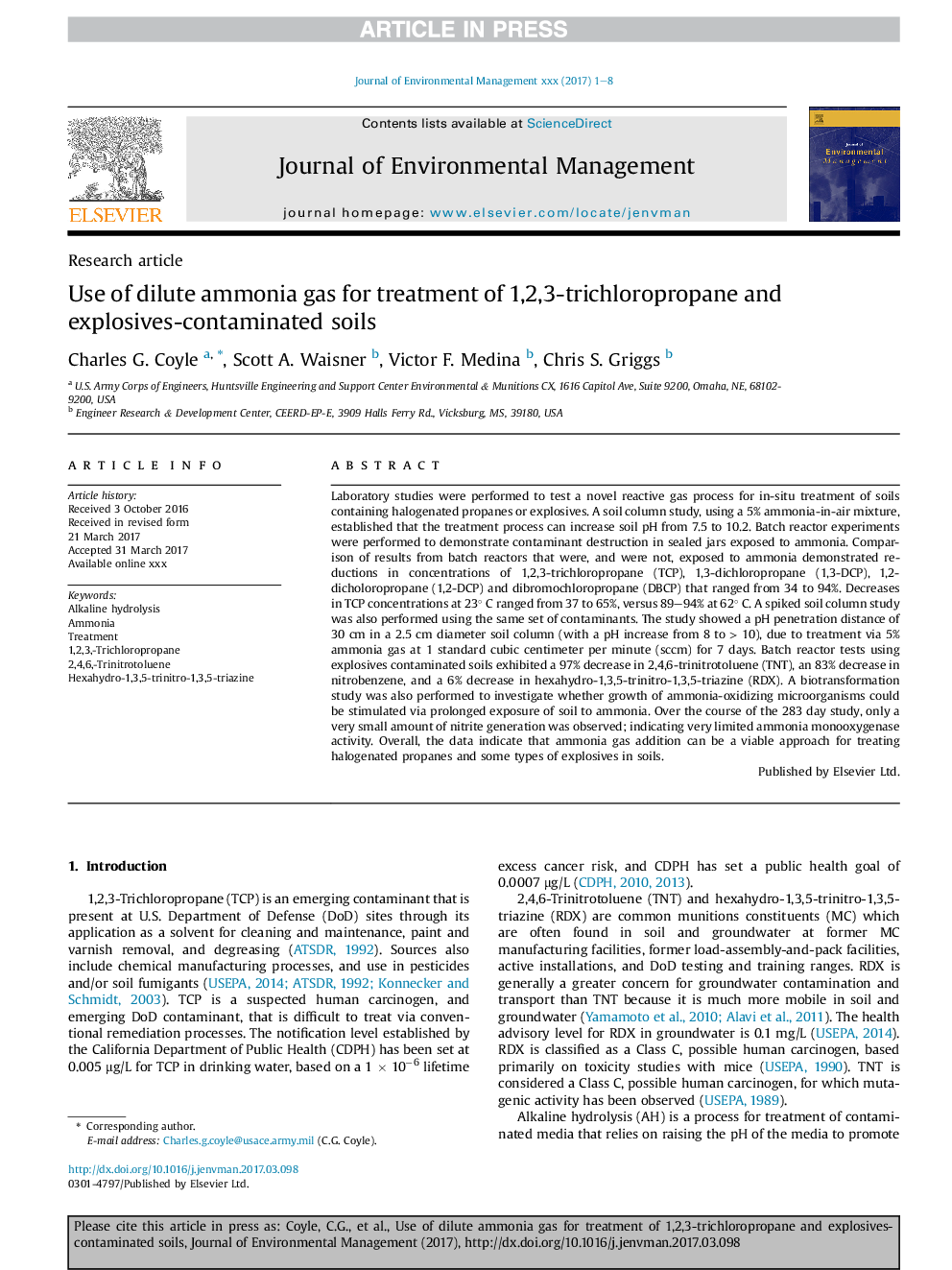| Article ID | Journal | Published Year | Pages | File Type |
|---|---|---|---|---|
| 7478766 | Journal of Environmental Management | 2017 | 8 Pages |
Abstract
Laboratory studies were performed to test a novel reactive gas process for in-situ treatment of soils containing halogenated propanes or explosives. A soil column study, using a 5% ammonia-in-air mixture, established that the treatment process can increase soil pH from 7.5 to 10.2. Batch reactor experiments were performed to demonstrate contaminant destruction in sealed jars exposed to ammonia. Comparison of results from batch reactors that were, and were not, exposed to ammonia demonstrated reductions in concentrations of 1,2,3-trichloropropane (TCP), 1,3-dichloropropane (1,3-DCP), 1,2-dicholoropropane (1,2-DCP) and dibromochloropropane (DBCP) that ranged from 34 to 94%. Decreases in TCP concentrations at 23° C ranged from 37 to 65%, versus 89-94% at 62° C. A spiked soil column study was also performed using the same set of contaminants. The study showed a pH penetration distance of 30 cm in a 2.5 cm diameter soil column (with a pH increase from 8 to > 10), due to treatment via 5% ammonia gas at 1 standard cubic centimeter per minute (sccm) for 7 days. Batch reactor tests using explosives contaminated soils exhibited a 97% decrease in 2,4,6-trinitrotoluene (TNT), an 83% decrease in nitrobenzene, and a 6% decrease in hexahydro-1,3,5-trinitro-1,3,5-triazine (RDX). A biotransformation study was also performed to investigate whether growth of ammonia-oxidizing microorganisms could be stimulated via prolonged exposure of soil to ammonia. Over the course of the 283 day study, only a very small amount of nitrite generation was observed; indicating very limited ammonia monooxygenase activity. Overall, the data indicate that ammonia gas addition can be a viable approach for treating halogenated propanes and some types of explosives in soils.
Related Topics
Physical Sciences and Engineering
Energy
Renewable Energy, Sustainability and the Environment
Authors
Charles G. Coyle, Scott A. Waisner, Victor F. Medina, Chris S. Griggs,
